A Sustainable Viticulture Method Adapted to the Cold Climate Zone in China
Abstract
1. Introduction
2. The Foundation of CCM—Crawled Cordon Training (CCT)
3. Vineyard Management during the Growing Season
3.1. Covering of Grass and Branches
3.2. Physical Methods of Flower and Fruit Thinning
4. Vineyard Management during Dormant Season
4.1. Biodegradable Liquid Film (BLF)
4.2. Winter Suspension of Shoots
5. Sustainable Development Prospects of Grape and Wine Industry in Arid and Semi-Arid Regions under Continental Monsoon Climate
6. Conclusions
Author Contributions
Funding
Institutional Review Board Statement
Informed Consent Statement
Conflicts of Interest
References
- Battisti, D.S.; Naylor, R.L. Historical Warnings of Future Food Insecurity with Unprecedented Seasonal Heat. Science 2009, 323, 240–244. [Google Scholar] [CrossRef]
- Jones, G.V.; White, M.A.; Cooper, O.R.; Storchmann, K. Climate Change and Global Wine Quality. Clim. Change 2005, 73, 319–343. [Google Scholar] [CrossRef]
- Hannah, L.; Roehrdanz, P.R.; Ikegami, M.; Shepard, A.V.; Shaw, M.R.; Tabor, G.; Zhi, L.; Marquet, P.A.; Hijmans, R.J. Climate change, wine, and conservation. Proc. Natl. Acad. Sci. USA 2013, 110, 6907–6912. [Google Scholar] [CrossRef] [PubMed]
- Rayne, S.; Forest, K.; Friesen, K.J. Projected Climate Change Impacts on Grape Growing in the Okanagan Valley, British Columbia, Canada. Nat. Preced. 2009, 18, S599. [Google Scholar] [CrossRef]
- Vool, E.; Rätsep, R.; Karp, K. Effect of genotype on grape quality parameters in cool climate conditions. Acta Hortic. 2015, 1082, 353–358. [Google Scholar] [CrossRef]
- Lisek, J.; Lisek, A. Cold Hardiness of Primary Buds of Wine and Table Grape Cultivars in Poland. S. Afr. J. Enol. Vitic. 2020, 41, 189–196. [Google Scholar] [CrossRef]
- Clark, M.D. Development of Cold Climate Grapes in the Upper Midwestern US: The Pioneering Work of Elmer Swenson. In Plant Breeding Reviews; Goldman, I., Ed.; Wiley: Hoboken, NJ, USA, 2020; Volume 43, pp. 31–60. [Google Scholar]
- Li, H.; Wang, H. Chinese Wine; NWSUAF Press: Yangling, China, 2010. [Google Scholar]
- Huo, X.S. Study of the Zoning Thermal Indexes of the Grapevine and Viticulture Zoning in China; Northwest A&F University: Yangling, China, 2006. [Google Scholar]
- Wang, L. Climatic Zoning and Variety Regionalization of Wine Grape in China Based on DEM; Northwest A&F University: Yangling, China, 2017. [Google Scholar]
- Wang, X.Q.; Xie, X.L.; Chen, N.; Wang, H.; Li, H. Study on current status and climatic characteristics of wine regions in China. Vitis 2018, 57, 9–16. [Google Scholar] [CrossRef]
- Xue, T.T.; Han, X.; Zhang, H.J.; Wang, Y.; Wang, H.; Li, H. Effects of a biodegradable liquid film on winter chill protection of winegrape cultivars. Sci. Hortic. 2019, 246, 398–406. [Google Scholar] [CrossRef]
- Xue, T.T.; Han, X.; Zhang, H.J.; Li, H. Wind erosion prevention effect of different overwintering treatments in viticulture regions based on wind tunnel test. J. Sediment. Res. 2018, 43, 58–64. [Google Scholar] [CrossRef]
- Wang, S. Effect of Shoots Windbreak on Vineyard Ecotope in the Soil-Buried Cold-Proof Period; NWSUAF Press: Yangling, China, 2015. [Google Scholar]
- Khanizadeh, S.; Rekika, D.; Levasseur, A.; Groleau, Y.; Richer, C.; Fisher, H. Growing Grapes in a Cold Climate with Winter Temperature below −25 °C. Acta Hortic. 2004, 663, 931–935. [Google Scholar] [CrossRef]
- Davenport, J.R.; Keller, M.; Mills, L.J. How Cold Can You Go? Frost and Winter Protection for Grape. Hortscience 2008, 43, 1966–1969. [Google Scholar] [CrossRef]
- Keller, M.; Mills, L.J. Effect of pruning on recovery and productivity of cold-injured merlot grapevines. Am. J. Enol. Vitic. 2007, 58, 351–357. [Google Scholar]
- Wolf, T.K. Crop yield effects on cold hardiness of ‘cabernet sauvignon’ dormant buds. Acta Hortic. 2004, 640, 177–187. [Google Scholar] [CrossRef]
- Snyder, R.L.; Melo-Abreu, J. Frost Protection: Fundamentals, Practice and Economics: Volume I; Frost protection: Fundamentals, practice and economics, Vol. I; FAO: Rome, Italy, 2005; Volume I. [Google Scholar]
- Li, H. Crawled Cordon Training: A New Grapevine Shaping and Pruning System for the Soil-Bury Over-Wintering Zone in China; NWSUAF Press: Yangling, China, 2015; Volume 1. [Google Scholar]
- Li, H.; Fang, Y.L. Study on the Mode of Sustainable Viticulture: Quality, Stability, Longevity and Beauty. Sci. Technol. Rev. 2005, 23, 20–22. [Google Scholar]
- Hu, Z.C.; Tian, L.J.; Peng, B.L.; Ji, F.L.; Wang, H.O. Studies and application on domestic and international mechanization of grape production. Farm. Mach. 2005, 9, 62–63. [Google Scholar]
- Li, H. Viticulture; China Agriculture Press: Beijing, China, 2008. [Google Scholar]
- Sun, Q.; Rost, T.L.; Matthews, M.A. Pruning-induced tylose development in stems of current-year shoots of Vitis vinifera (Vitaceae). Am. J. Bot. 2006, 93, 1567–1576. [Google Scholar] [CrossRef] [PubMed]
- Zhao, X.H.; Liu, L.Y.; Nan, L.J.; Wang, H.; Li, H. Development of tyloses in the xylem vessels of Meili grapevine and their effect on water transportation. Russ. J. Plant Physiol. 2014, 61, 194–203. [Google Scholar] [CrossRef]
- Schulte, P.J.; Brooks, J.R. Branch junctions and the flow of water through xylem in Douglas-fir and ponderosa pine stems. J. Exp. Bot. 2003, 54, 1597–1605. [Google Scholar] [CrossRef] [PubMed]
- Lo Gullo, M.A.; Noval, L.C.; Salleo, S.; Nardini, A. Hydraulic architecture of plants of Helianthus annuus L. cv. Margot: Evidence for plant segmentation in herbs. J. Exp. Bot. 2004, 55, 1549–1556. [Google Scholar] [CrossRef]
- Nan, L.J. Study on the Physiological Metabolisms of Wine-Grape of Single Crawled Cordon Training Trellises Growing in Soil-Bury Over-Wintering Zone; Northwest A&F University: Yangling, China, 2013. [Google Scholar]
- Zhao, X.H. A New Grape Shaping Method in the Soil-Bury Over-Wintering Zone of Arid and Semiarid Areas; Northwest A&F University: Yangling, China, 2013. [Google Scholar]
- Zhao, X.H.; Li, C.X.; Nan, L.J.; Wang, H.; Li, H. A new grape shaping method in the soil-bury over-wintering zone of arid and semiarid areas. Pak. J. Bot. 2013, 45, 1307–1314. [Google Scholar]
- De la Hera-Orts, M.L.; Martinez-Cutillas, A.; Lopez-Roca, J.M.; Gomez-Plaza, E. Effects of moderate irrigation on vegetative growth and productive parameters of Monastrell vines grown in semiarid conditions. Span. J. Agric. Res. 2004, 2, 273–281. [Google Scholar] [CrossRef]
- Reynolds, A.G.; Wardle, D.A.; Cliff, M.; King, M. Impact of training system and vine spacing on vine performance, berry composition, and wine sensory attributes of riesling. Am. J. Enol. Vitic. 2004, 55, 96–103. [Google Scholar]
- Basile, B.; Marsal, J.; Mata, M.; Vallverdu, X.; Bellvert, J.; Girona, J. Phenological Sensitivity of Cabernet Sauvignon to Water Stress: Vine Physiology and Berry Composition. Am. J. Enol. Vitic. 2011, 62, 452–461. [Google Scholar] [CrossRef]
- Nan, L.J.; Liu, L.Y.; Zhao, X.H.; Qiu, S.; Wang, H.; Li, H. Effect of alternative new pruning system and harvesting times on aroma compounds of young wines from Ecolly (Vitis vinifera) in a new grape growing region of the Weibei Plateau in China. Sci. Hortic. 2013, 162, 181–187. [Google Scholar] [CrossRef]
- Nan, L.J.; Zhao, X.H.; Liu, L.Y.; Wang, H.; Li, H.; Huang, J. A cmparative eophysiology of Ecolly (Vitis vinifera L.) uder the taditional Independent Long-system Pruning and Crawled Cordon Training. Pak. J. Bot. 2014, 46, 489–496. [Google Scholar]
- Hall, A.; Lamb, D.W.; Holzapfel, B.P.; Louis, J.P. Within-season temporal variation in correlations between vineyard canopy and winegrape composition and yield. Precis. Agric. 2011, 12, 103–117. [Google Scholar] [CrossRef]
- Reynolds, A.G.; Pool, R.M.; Mattick, L.R. Effect of training system on growth, yield, fruit composition, and wine quality of Seyval blanc. Am. J. Enol. Vitic. 1985, 36, 156–165. [Google Scholar] [CrossRef]
- Wang, S.; Li, H.; Ye, Q.H.; Wang, H. Winter chill protection of grapevines by burial: Evaluation of the crawled cordon training system. Vitis 2016, 55, 45–51. [Google Scholar] [CrossRef]
- Jing, S.X.; Wu, L.P. Describing on-off fruiting habits of fruit trees by ABCmethod. J. Shenyang Agric. Univ. 1986, 17, 68–70. [Google Scholar]
- He, W.Q. Study on Wind Erosion Affecting Factors and Protective Cropping System of Agricultural Land in Northern Farming-Pastoral Ecotone; China Agricultural University: Beijing, China, 2004. [Google Scholar]
- Luo, G.G. Historic task for China’s viticulture: Transformation from quantity—focused pattern to a quality-oriented one. J. Fruit Sci. 2010, 27, 431–435. [Google Scholar] [CrossRef]
- Xi, Z.M.; Zhang, Z.W.; Cheng, Y.F.; Cheng, Z.; Li, H. The Effect of Vineyard Cover Crop on Main Monomeric Phenols of Grape Berry and Wine in Vitis vinifera L. cv. Cabernet Sauvignon. Agric. Sci. China 2009, 42, 3209–3215. [Google Scholar] [CrossRef]
- Carsoulle, J. Permanent grassing of vineyards: Influence on the wine production. Prog. Agric. Vitic. 1997, 114, 87–92. [Google Scholar]
- Tan, S.; Crabtree, G.D. Competition between Perennial Ryegrass Sod and ‘Chardonnay’ Wine Grapes for Mineral Nutrients. Hortscience 1990, 25, 217–221. [Google Scholar] [CrossRef]
- Muscas, E.; Cocco, A.; Mercenaro, L.; Cabras, M.; Lentini, A.; Porqueddu, C.; Nieddu, G. Effects of vineyard floor cover crops on grapevine vigor, yield, and fruit quality, and the development of the vine mealybug under a Mediterranean climate. Agric. Ecosyst. Environ. 2017, 237, 203–212. [Google Scholar] [CrossRef]
- Xi, Z.M.; Li, H.; Zhou, P.; Yue, T.X. Effects of cover cropping system on soil moisture content and water storage in a vineyard. Acta Prataculturae Sin. 2011, 20, 62–68. [Google Scholar]
- Monteiro, A.; Lopes, C.M. Influence of cover crop on water use and performance of vineyard in Mediterranean Portugal. Agric. Ecosyst. Environ. 2007, 121, 336–342. [Google Scholar] [CrossRef]
- Caspari, H.W.; Neal, S.; Naylor, A. Cover crop management in vineyards to enhance deficit irrigation in a humid climate. Acta Horticulturae 1997, 449, 313–320. [Google Scholar] [CrossRef]
- Xi, Z.M. Study on the Influence of Cover Crop in the Vineyard on Vine and Wine; Northwest A&F University: Yangling, China, 2008. [Google Scholar]
- Xi, Z.M.; Li, H.; Wang, M.L.; Zhao, G.F.; Wang, N. The effect of green cover on photosynthetic characteristics of grapevine (Vitis vinifera L. cv. Cabernet Sauvignon) leaves. Acta Agric. Boreali Occident. Sin. 2005, 14, 83–86, 91. [Google Scholar]
- Xi, Z.M.; Zhang, Z.W.; Ma, X.L.; Ma, S.Q.; Li, H. Effects of vineyard cover crops on main nitrogen compounds in grape berry and wine from Vitis vinifera L. cv. Cabernet Sauvignon. Sci. Agric. Sin. 2010, 43, 4045–4052. [Google Scholar]
- Xi, Z.M.; Tao, Y.S.; Zhang, L.; Li, H. Impact of cover crops in vineyard on the aroma compounds of Vitis vinifera L. cv Cabernet Sauvignon wine. Food Chem. 2011, 127, 516–522. [Google Scholar] [CrossRef]
- Xi, Z.M.; Zhang, Z.W.; Li, H. Research progress of vineyard weeding system. Shaanxi Agric. Sci. 2003, 1, 22–25. [Google Scholar]
- Xi, Z.M.; Yue, T.X.; Zhang, J.; Cheng, J.M.; Li, H. Relationship Between Soil Biological Characteristics and Nutrient Content Under Intercropping System of Vineyard in Northwestern Semiarid Area. Sci. Agric. Sin. 2011, 44, 2310–2317. [Google Scholar]
- Coutand, C. The Effect of Mechanical Stress on Plant Susceptibility to Pests: A Mini Opinion Review. Plants 2020, 9, 10. [Google Scholar] [CrossRef]
- Zheng, H.T.; Dong, X.Y.; Xue, T.T.; Han, X.; Li, H. Study on the physical methods of flower and fruit thinning of wine grape. Sino Overseas Grapevine Wine 2018, 6, 55–58. [Google Scholar] [CrossRef]
- Rodrigo, J. Spring frosts in deciduous fruit trees—Morphological damage and flower hardiness. Sci. Hortic. 2000, 85, 155–173. [Google Scholar] [CrossRef]
- Friend, A.P. Berry Set and Development in Vitis vinifera L. Ph.D. Thesis, Lincoln University, Lincoln, New Zealand, 2005. [Google Scholar]
- Friend, A.P.; Trought, M.C.T. Delayed winter spur-pruning in New Zealand can alter yield components of Merlot grapevines. Aust. J. Grape Wine Res. 2007, 13, 157–164. [Google Scholar] [CrossRef]
- Wang, S.; Li, H.; Wang, H. Wind erosion prevention effect of suspending shoots on wires after winter pruning in soil-burying zones over-wintering. Trans. Chin. Soc. Agric. Eng. 2015, 31, 206–212. [Google Scholar]
- Wan, M.; Pan, C.D.; Wang, M.; Jin, Y. Application of the digitized measurement on windbreak porosity of farmland shelter forests. Arid Land Geogr. 2005, 28, 120–123. [Google Scholar]
- Zhong, W.; Kong, J.M.; Yang, T. Wind tunnel test about the effect of vegetation sand-barrier on wind-blown sand flow near ground surface. Arid Zone Res. 2009, 26, 872–876. [Google Scholar] [CrossRef]
- Zou, C.X.; Shen, X.D.; Li, Z.J. Topsoil sediment distribution along height above bare tillage land in agro-pastoral ecotone of northern foot of Yinshan Mountain. Trans. Chin. Soc. Agric. Eng. 2010, 26, 123–128. [Google Scholar]
- Radu, A.L.; Olaru, O.; Dimitriucaracota, M.; Banacu, C.S. Ecological footprint analysis: Towards a projects evaluation model for promoting sustainable development. In Proceedings of the 21st International Business Information Management Association Conference (IBIMA), Vienna, Austria, 27–28 June 2013; p. 399. [Google Scholar]
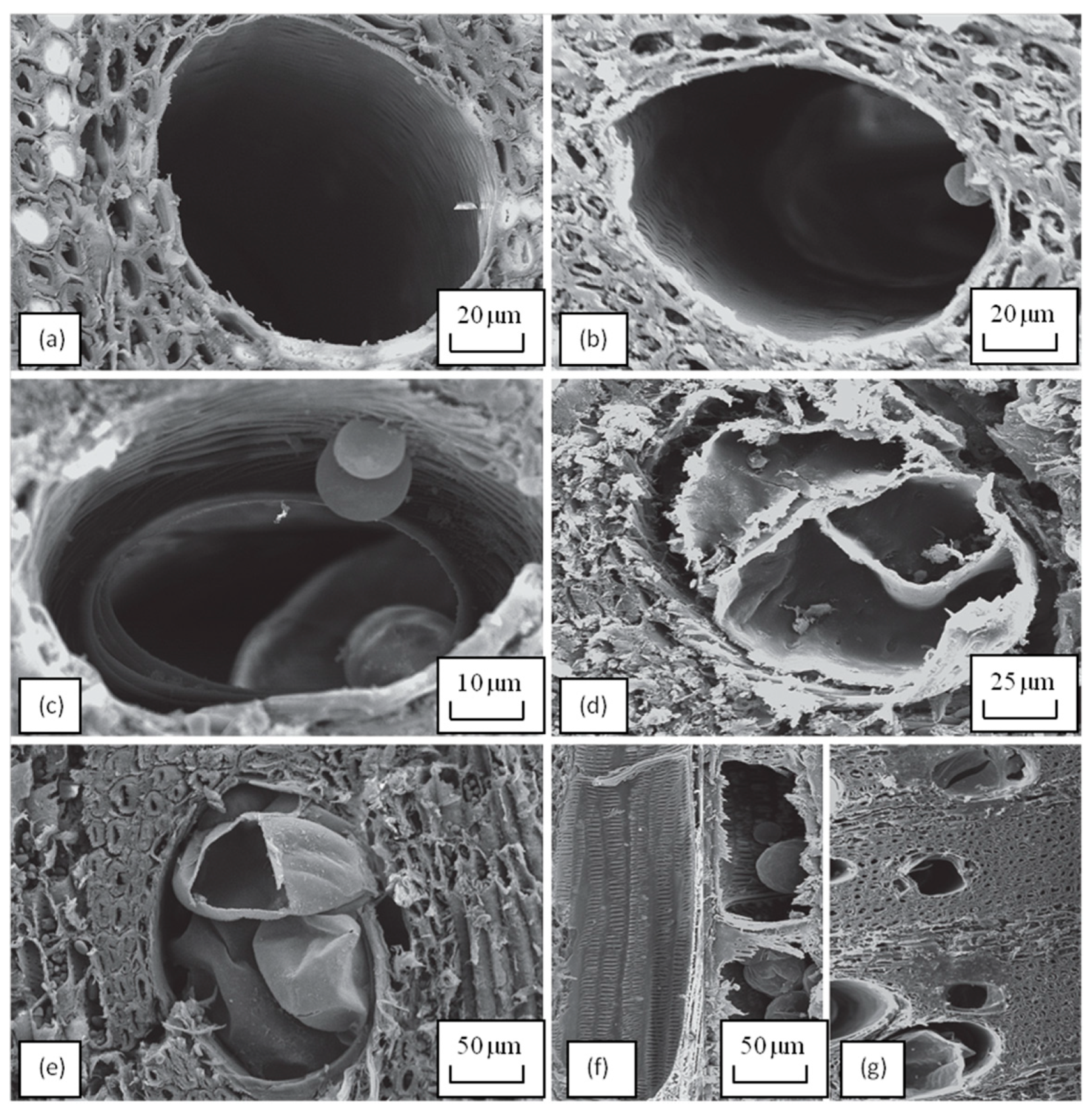
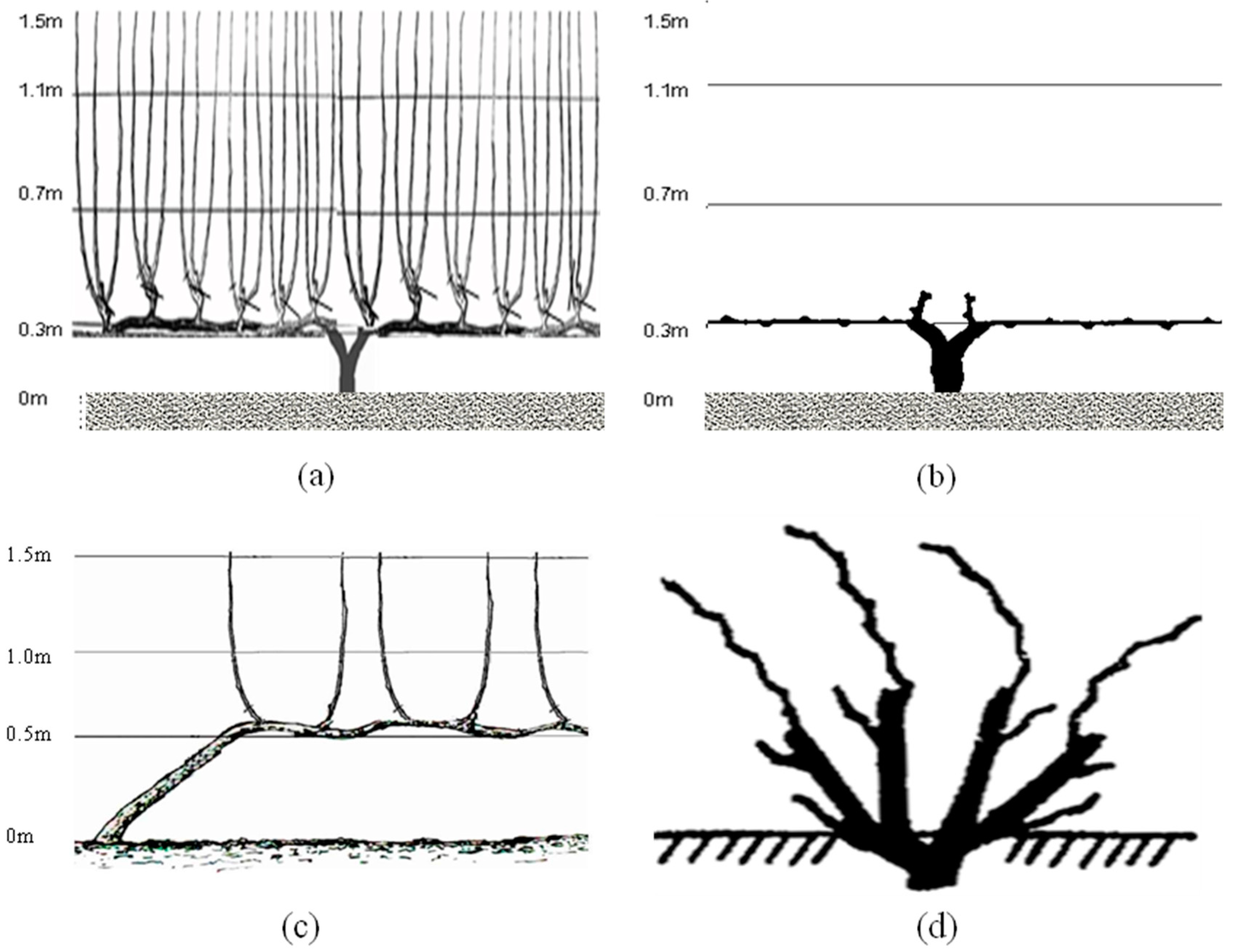
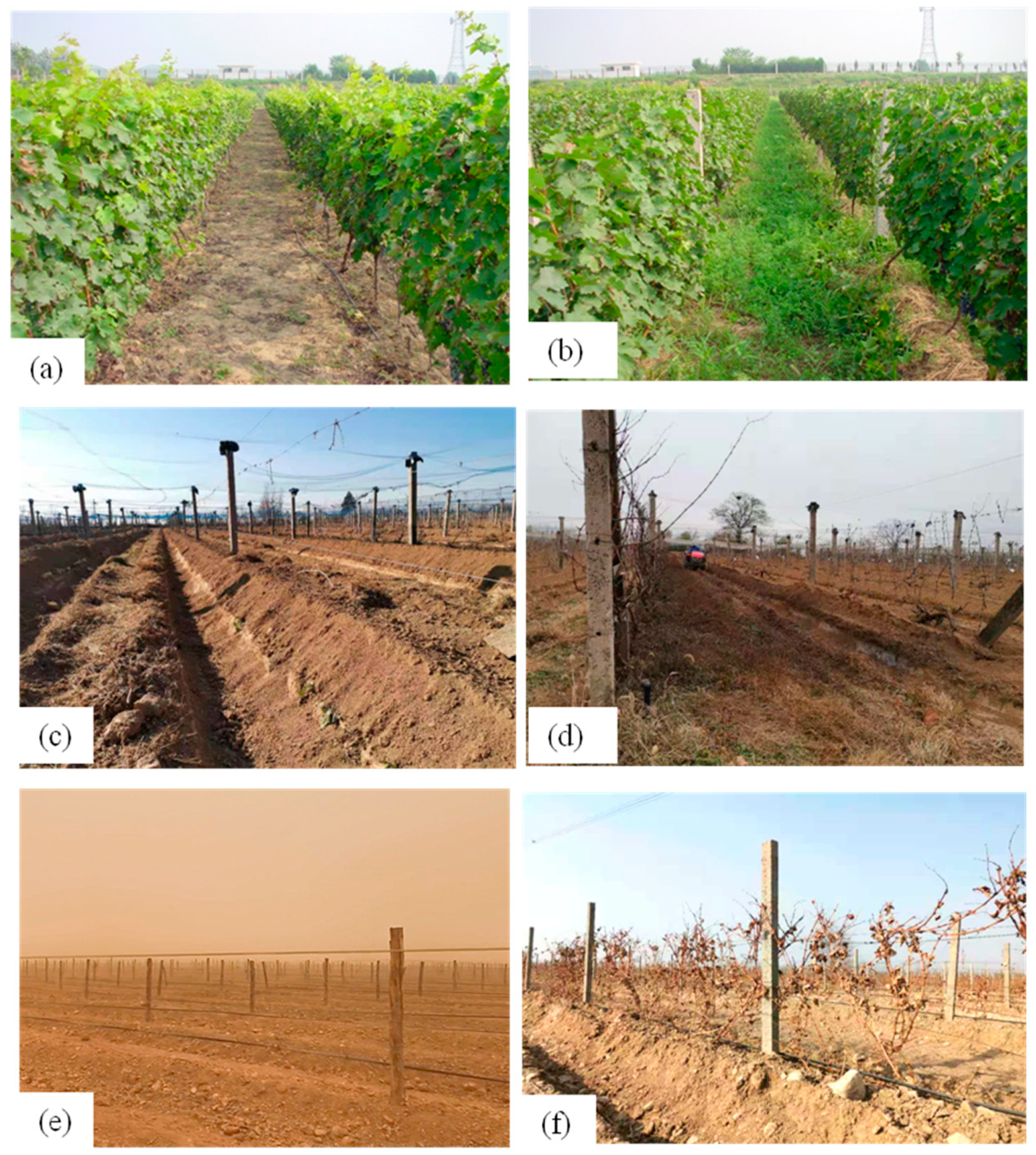
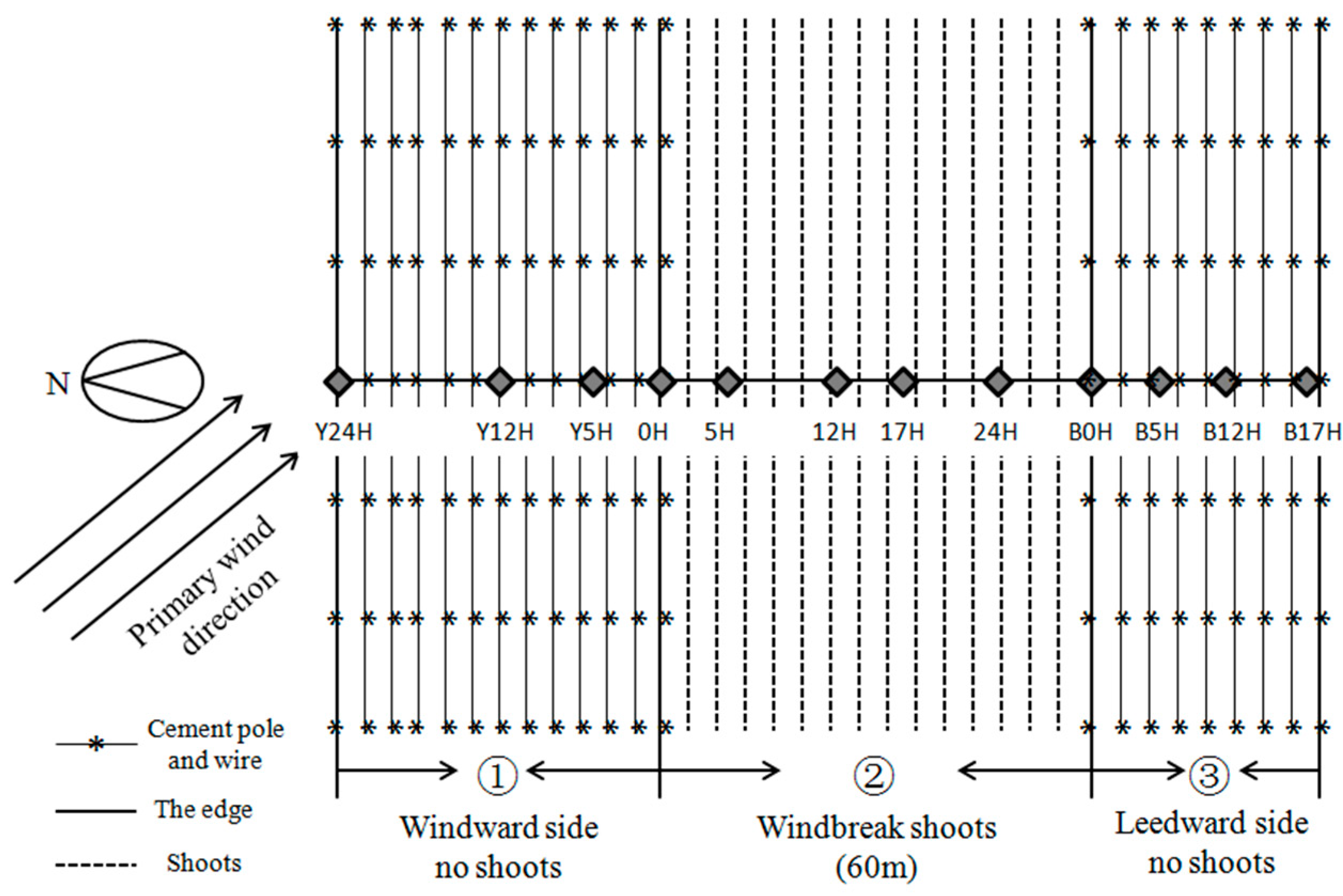
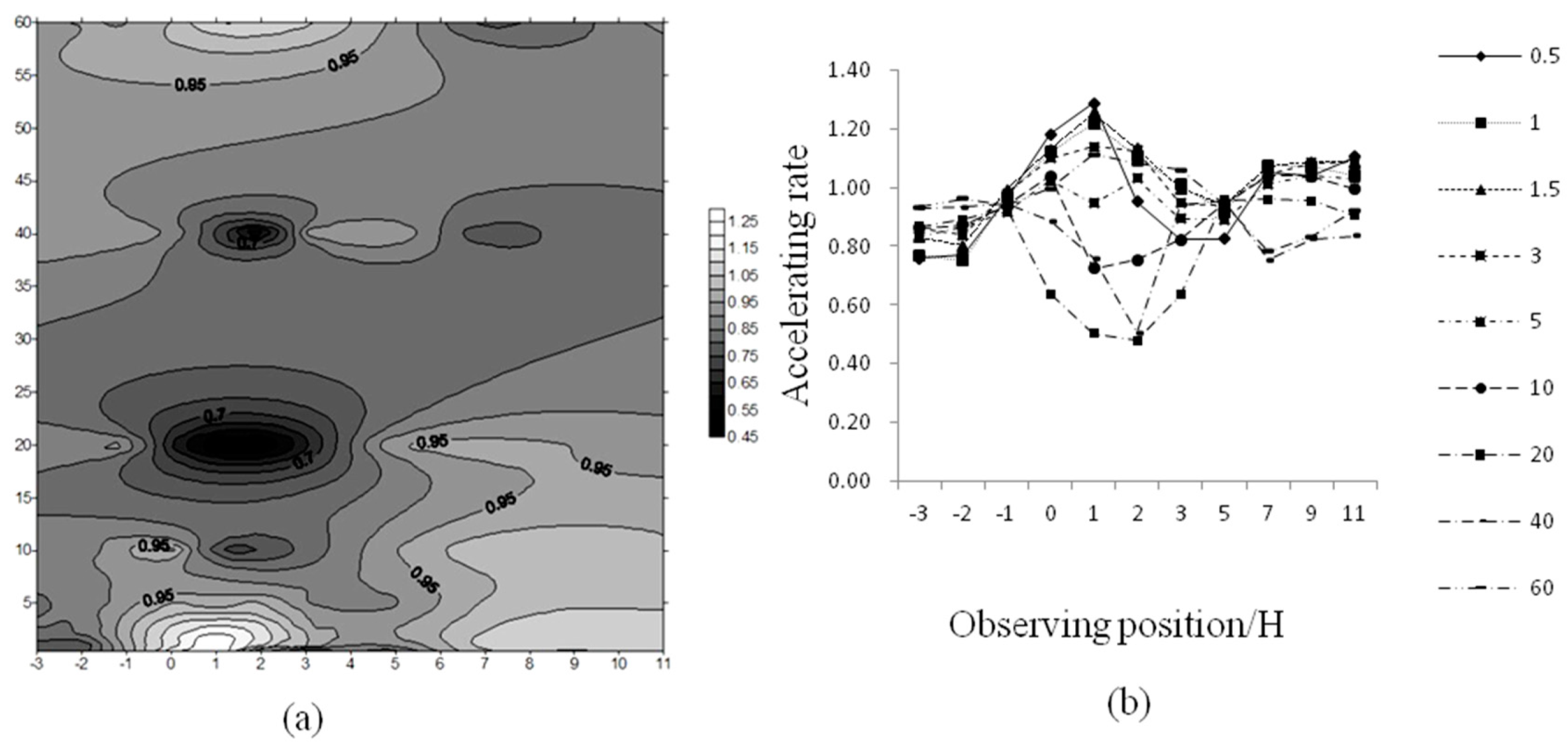
| Treatment | 2005 | 2006 | 2007 | 2008 | 2009 | A Value |
|---|---|---|---|---|---|---|
| MVF | 810.42 | 869.88 | 750.72 | 812.26 | 429.63 | 0.2180A |
| CT | 782.72 | 930.22 | 993.94 | 780.87 | 420.02 | 0.1070B |
| CCT | 692.08 | 721.78 | 781.88 | 746.46 | 595.16 | 0.0837B |
| Treatment | CA | ST (CK) | |
|---|---|---|---|
| microbial amount (0–20 cm) | Bacteria (×104/g) | 31,572.23a | 14,549.43b |
| Fungi (×104/g) | 8.45a | 4.84b | |
| Actinomyces (×104/g) | 375.60a | 305.81a | |
| Azotobacter (×104/g) | 282.76a | 71.42b | |
| Cellulose-decomposing microorganisms (×104/g) | 5.31a | 2.76b | |
| enzymatic activity (0–40 cm) | Urease (NH3-N mg/g) | 1.70 ± 0.83a | 1.18 ± 0.53b |
| Phosphatase (P2O5 mg/100g) | 7.41 ± 1.04a | 4.68 ± 0.50b | |
| Amylase (Maltose mg/g) | 0.78 ± 0.09a | 0.94 ± 0.43a | |
| Sucrase (Glucose mg/g) | 15.08 ± 2.46a | 10.31 ± 3.87b | |
| Cellulase (Glucose mg/10g) | 6.37 ± 0.85a | 4.91 ± 0.64a | |
| Catalase (0.05 mol/L KMnO4 mL/g) | 7.69 ± 0.85a | 7.20 ± 0.58a | |
| nutrient content (0–40 cm) | Hydrolyzable N (mg/kg) | 40.75 ± 4.28a | 35.30 ± 2.09b |
| Available P(mg/kg) | 5.54 ± 1.05b | 10.77 ± 0.65a | |
| Available K (mg/kg) | 122.63 ± 6.97a | 109.13 ± 5.59b | |
| Total N (g/kg) | 0.74 ± 0.02a | 0.66 ± 0.05b | |
| Total P (g/kg) | 0.67 ± 0.04a | 0.75 ± 0.05a | |
| Total K (g/kg) | 20.10 ± 0.39a | 19.88 ± 0.31a | |
| Organic matter (g/kg) | 11.31 ± 0.51a | 9.90 ± 0.37b | |
| physical properties (0–60 cm) | Soil bulk density(g/cm3) | 1.38b | 1.53a |
| Soil porosity (%) | 48.06a | 42.20b |
Publisher’s Note: MDPI stays neutral with regard to jurisdictional claims in published maps and institutional affiliations. |
© 2021 by the authors. Licensee MDPI, Basel, Switzerland. This article is an open access article distributed under the terms and conditions of the Creative Commons Attribution (CC BY) license (https://creativecommons.org/licenses/by/4.0/).
Share and Cite
Han, X.; Xue, T.; Liu, X.; Wang, Z.; Zhang, L.; Wang, Y.; Yao, F.; Wang, H.; Li, H. A Sustainable Viticulture Method Adapted to the Cold Climate Zone in China. Horticulturae 2021, 7, 150. https://doi.org/10.3390/horticulturae7060150
Han X, Xue T, Liu X, Wang Z, Zhang L, Wang Y, Yao F, Wang H, Li H. A Sustainable Viticulture Method Adapted to the Cold Climate Zone in China. Horticulturae. 2021; 7(6):150. https://doi.org/10.3390/horticulturae7060150
Chicago/Turabian StyleHan, Xing, Tingting Xue, Xu Liu, Zhilei Wang, Liang Zhang, Ying Wang, Fei Yao, Hua Wang, and Hua Li. 2021. "A Sustainable Viticulture Method Adapted to the Cold Climate Zone in China" Horticulturae 7, no. 6: 150. https://doi.org/10.3390/horticulturae7060150
APA StyleHan, X., Xue, T., Liu, X., Wang, Z., Zhang, L., Wang, Y., Yao, F., Wang, H., & Li, H. (2021). A Sustainable Viticulture Method Adapted to the Cold Climate Zone in China. Horticulturae, 7(6), 150. https://doi.org/10.3390/horticulturae7060150






